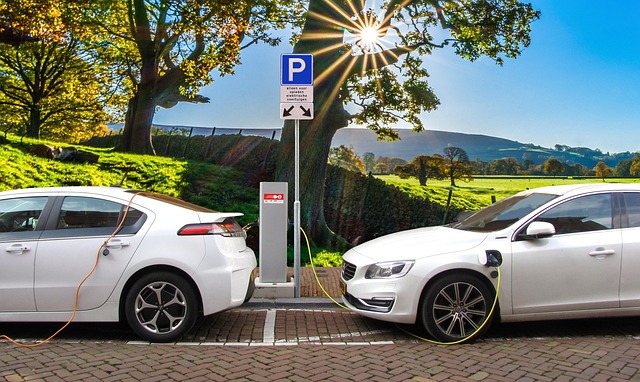Looking to register your car in California? This comprehensive guide breaks down the process step-by-step, ensuring a smooth experience. From understanding key requirements like proper documentation and vehicle history checks using a VIN verifier, to completing the registration online or in-person, you’ll discover everything needed for a successful car registration. Follow these instructions to get your California plates promptly!
- Understand California Car Registration Requirements
- Gather Necessary Documents for Car Registration
- Use VIN Verifier to Check Vehicle History
- Complete Online or In-Person Registration Process
- Pay Car Registration Fees and Receive Plate
Understand California Car Registration Requirements

Before registering your car in California, it’s essential to understand the state’s specific requirements. One crucial aspect is ensuring your vehicle has a valid and accurate Vehicle Identification Number (VIN) inspection. This involves verifying the VIN using official channels, which can be done through a mobile VIN inspection or by visiting an authorized location. The process aims to check that your car meets all safety standards and legal criteria for roadworthiness.
California requires that vehicles undergo a comprehensive check, including examining key components like brakes, lights, tires, and emissions systems. Additionally, the state’s Department of Motor Vehicles (DMV) mandates a current and accurate VIN record, which can be facilitated by utilizing a mobile VIN verification service or completing the process in person at a DMV office. This step is vital to ensure the vehicle’s history is transparent and to prevent any potential issues with registration.
Gather Necessary Documents for Car Registration

Before you start the registration process, make sure to gather all the essential documents required by the California Department of Motor Vehicles (DMV). One crucial document is the Vehicle Identification Number (VIN) verifier, which can be obtained through a mobile VIN inspection or online services. This unique identifier ensures that your vehicle matches the details in the DMV’s records.
Additionally, you’ll need proof of insurance, a valid driver’s license, and the title or lease agreement for the car. It’s important to check with the DMV for any specific forms they require, as well as ensure that all documents are up-to-date and meet their criteria. This step is vital in the registration process and helps prevent any potential issues later on.
Use VIN Verifier to Check Vehicle History

Before registering your car in California, it’s crucial to verify its history using a reliable tool like a VIN verifier. This process ensures that the vehicle has no outstanding issues or hidden problems. Many online services and apps, including mobile vin verification tools, can help you complete this step efficiently. By inputting your car’s unique Vehicle Identification Number (VIN), you gain access to detailed information about its past, including ownership records, accident history, and maintenance logs.
A mobile VIN inspection allows for a swift and convenient check, which is particularly useful when dealing with out-of-state purchases or older vehicles. This initial verification step plays a vital role in ensuring you make an informed decision during the registration process, ultimately protecting you from potential legal issues or unexpected repairs down the line.
Complete Online or In-Person Registration Process

In California, registering a car involves either completing an online or in-person process, both of which are designed to be straightforward and efficient. The first step for any vehicle owner is to gather essential documents such as proof of ownership, identification, and insurance information. Once these are ready, the registration can begin. For added convenience, California offers a mobile vin verification service, allowing owners to complete part of the process from the comfort of their homes or offices. This method involves inputting your vehicle’s unique VIN (Vehicle Identification Number) into an approved system for instant validation, ensuring accuracy and saving time.
If you prefer an in-person approach or need further assistance, you can visit a local Department of Motor Vehicles (DMV) office. There, a representative will guide you through the registration process, which includes verifying your vehicle’s history using a vin inspection to ensure it complies with state standards. Throughout this journey, whether online or in-person, having accurate and up-to-date information is key to a smooth car registration experience in California.
Pay Car Registration Fees and Receive Plate

After completing your vehicle’s registration application, the next step is to pay the necessary fees. California’s Department of Motor Vehicles (DMV) outlines the cost based on your vehicle’s type and age. You can typically pay online, by phone, or in person at a DMV office. Once your payment is processed, the DMV will issue your vehicle’s license plate.
Ensuring your car’s registration is complete involves a critical component: the Vehicle Identification Number (VIN) inspection. This process verifies the vehicle’s authenticity and history using the unique VIN number. Traditionally, this has been done at a fixed DMV location, but with modern advancements, mobile VIN verification services are now available. These services bring the inspection to you, offering convenience and an alternative to the traditional DMV visit.
Registering a car in California is a straightforward process that requires understanding the state’s specific requirements. By gathering all necessary documents, utilizing a VIN verifier to check a vehicle’s history, and completing either an online or in-person registration, you can efficiently get your vehicle on California’s roads. Remember to pay the required fees to receive your license plate, ensuring a smooth and legal driving experience.
